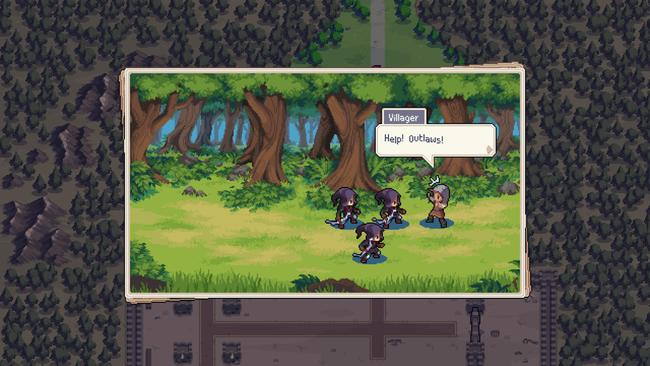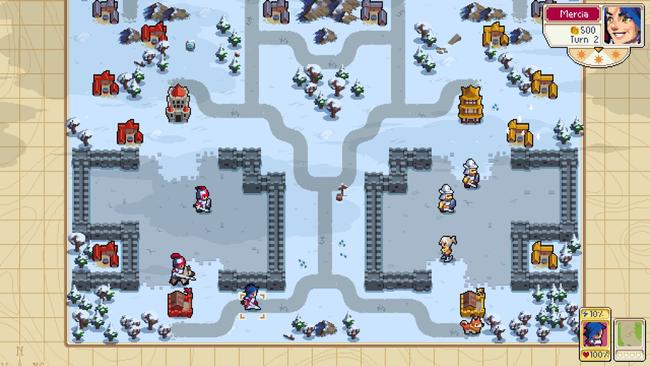
Wargroove Review
What do you do when a certain series or genre seems lost to the sands of time forever? Many might despair, pining for the good old days and replay their old favorites. Others, though, may decide they want to create their own game and pick up the banner for a new audience. Wargroove is one of those games, a clear love letter to the Advance Wars series that hasn’t seen a new entry in far too long. While Wargroove takes a fantasy slant to the typically more modernized series, the title is infused with Advance Wars DNA through and through.

Taking place on the continent of Aurania, war breaks out shortly after the assassination of Cherrystone’s king, and his daughter Mercia must defend her kingdom against the undead legions of Felheim. What initially begins as a squabble between two countries eventually turns into a conflict much bigger than the fate of Cherrystone, and an evil power must be defeated before it consumes the entire world.
Wargroove’s plot really doesn’t do anything out of the ordinary for a strategy RPG. War breaks out, and eventually something more important than the war threatens the world, and you go and defeat it. But the characters have so much personality that they more than make up for an otherwise cliched plot. Other than the gameplay, this is where Advance War’s inspiration really shines. The characters of Wargroove are striking and full of individuality, with their own unique quirks. Cutscenes can be equal parts serious and jovial, and the two tones play off each other well. This is all backed up with beautiful expressive pixel art, making a lot of the game a joy to just watch… though sometimes watching the animations in battle takes just a bit too long.
The plot and character interactions may be light-hearted, but the gameplay is anything but. Wargroove is a strategy game through and through, and it’s not afraid to beat you down in short order. Characters don’t gain levels like many other popular SRPGs, so your success or failure relies on resource management. Managing money, units, and their health can definitely take getting used to if you play more along the line of Fire Emblem and Disgaea than Advance Wars, but it makes for some really strategic play to take place. You can simply power-level and wipe out your foes in one blow, after all.

Every turn, you’ll gain income from your villages. How much income is determined by how many towns you have, so you’ll want to capture as many as possible. You can generate one new unit per fort a turn, but of course these cost money, and the more powerful units cost significantly more than a simple soldier or pikeman. On top of that, you need to keep things in mind like how quickly you can get units into the fray, taking over enemy towns so they can’t produce more troops, and what units are vulnerable to one another. While a codex of information is just a button press away, it can still be difficult to keep track of everything at all times.
Wargroove throws new units, map effects, and commanders at you at a breakneck pace, which can become overwhelming. Act 2 of the game has you dealing with the dreaded fog of war, mere hours into the campaign. It's a big jolt from the relatively easy first act, and while it shows the Wargroove isn't playing, it might be a bit much. The difficulty doesn’t let up from there either, offering some brutal maps later on. In Wargroove, you can’t grind or rely on your powerful commander to win the day by themselves--only cool strategies and cooler heads will prevail.
You can tweak the difficulty if you are having problems, but it comes with a caveat. Any tweak to make the game easier automatically tanks your grade, making it so that you can’t earn more than one star per battle. With the game’s epilogue being locked behind getting 100 total stars from battles, this leads to the problem that less strategically inclined players may find it difficult to collect enough stars to see the game fully through. It's a little disappointing to have the final battle locked behind a steep requirement.

While this can be frustrating, at least there are a few different modes players can try out and earn more stars from. Other than the standard campaign mode, there’s an Arcade Mode and a Puzzle Mode to try out, which are unlocked after finishing Act 1 and Act 3 of the campaign respectively. Arcade mode is a set of maps you can play through straight with the commander of your choice, and without much in the way of a story. It’s a good mode if you just want to play a few maps with no strings attached. I found Arcade Mode maps to go by at a quicker pace than campaign maps, which is great for quickplay and ended up being my favorite mode. However, you need to unlock commanders by finishing campaign maps, so you need to still play through the story.
The Puzzle Mode, meanwhile, gives you specific conditions you must complete with only resources the games give you. I wasn’t a big fan of it, but I can see the allure of trying to figure out the perfect solution to the problem at hand. On top of that, community-created maps can extend the lifetime of Wargroove immensely.
What it all boils down to is that Chucklefish knows their audience. In this Advance Wars starved world, Wargroove is the sustenance that keeps fans going. It’s a charming and difficult game, and while Wargroove is not perfect, it’s a great strategy title that strategy and SRPG fans will get a lot of fun out of.